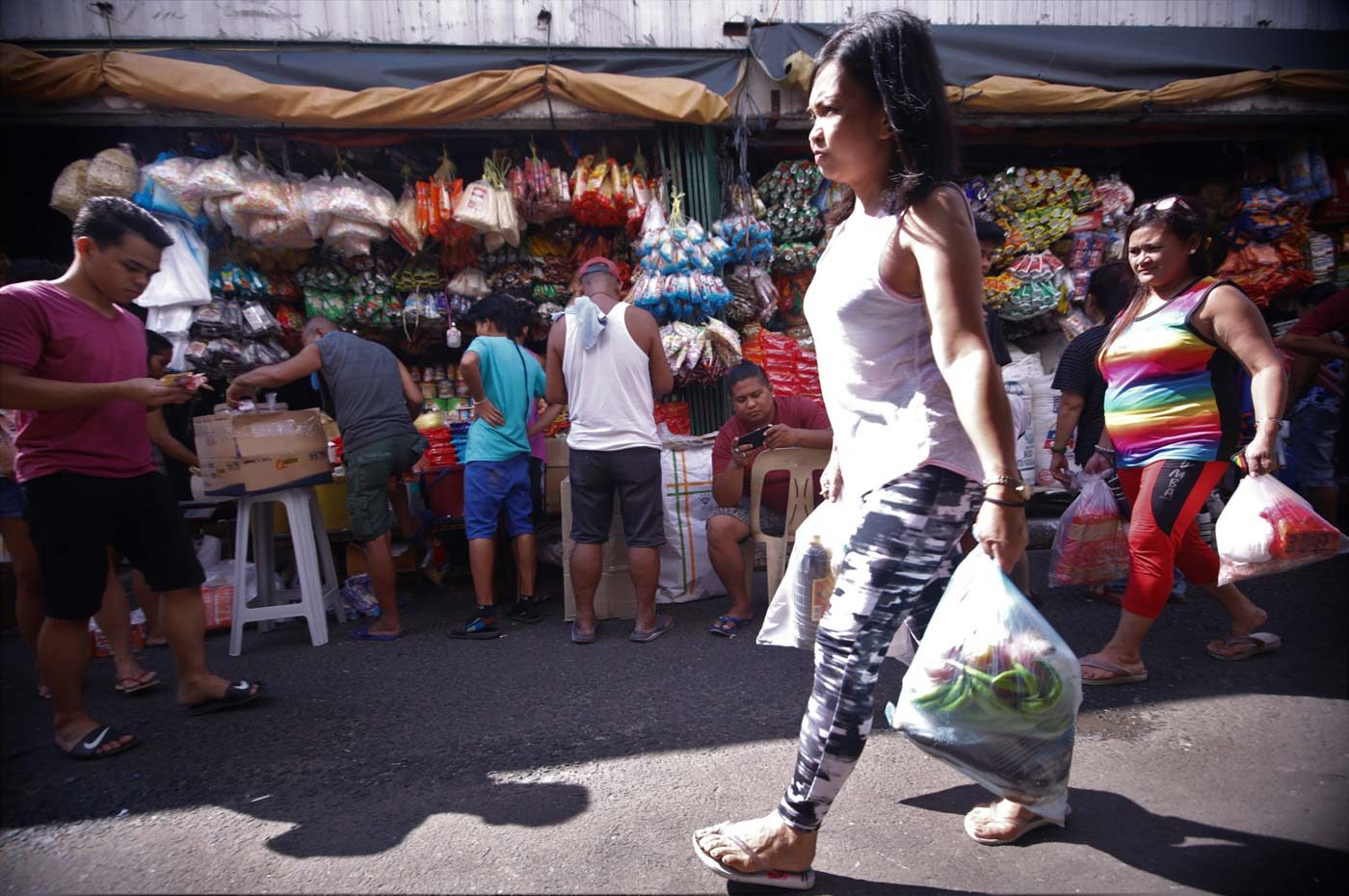SUMMARY
This is AI generated summarization, which may have errors. For context, always refer to the full article.

MANILA, Philippines – The country’s economic managers revised the government’s medium-term macroeconomic assumptions for 2018 to 2022 to reflect “developments at the national and global level.”
The Development Budget Coordination Committee (DBCC) announced on Tuesday, October 16, that they took into account the more expensive oil in the world market, tightening of monetary policies, and higher domestic inflation.
Inflation
The inflation forecast for 2018 was adjusted upwards to a range of 4.8% to 5.2%, from the previous 2% to 4%. The inflation forecast for 2019 was also adjusted to 3% to 4%.
Meanwhile, projections for 2020 to 2022 were retained at 2% to 4%, as they see inflation falling back within the target level by next year.
“We are optimistic that the administration has taken enough measures to tame inflation in the last quarter of 2018 and the full year of 2019,” said the economic managers in a joint statement.
President Rodrigo Duterte earlier issued Administrative Order No. 13, which removes non-tariff barriers and streamlines administrative procedures on the importation of agricultural products.
On the monetary policy front, the Bangko Sentral ng Pilipinas (BSP) has raised policy rates by a cumulative 150 basis points since May 2018 to anchor inflation expectations.
Economic managers urged Congress to immediately pass the rice tariffication bill to bring down rice prices by as much as P4 to P7 per kilo.
GDP and the peso
Economic managers also slashed the target for the country’s gross domestic product (GDP) this year.
From the optimistic 7% to 8%, the target is now at 6.5% to 6.9% for 2018. Growth targets for 2019 to 2022 of 7% to 8% remain unchanged.
“We remain optimistic, but anchored our optimism with prudence and reality…. We feel that we can still achieve up to 6.9%,” Socioeconomic Planning Secretary Ernesto Pernia said.
The GDP year-to-date average so far is at 6.2%.
Finance Secretary Carlos Dominguez III explained that various external developments, particularly in developed nations, have affected Philippine growth.
“We have to all realize that we are living in a very different world now. Six months ago, there were only rumors of [a] trade war and that escalated, adding a large measure of uncertainty in the world economic picture,” Dominguez said.
He linked the trade war to the steep increase in oil prices and interest rates, which in turn affected the Philippines’ inflation.
The DBCC also adjusted its assumptions for the Dubai crude oil per barrel. For 2018, the price of Dubai crude oil per barrel is expected to average $70 to $75. For 2019, the price range is projected to reach $75 to $85.
In 2020, this range is forecast to drop to $70 to $80, and become as low as $65 to $75 for 2021 and 2022.
The team also expects a weaker peso.
The currency is projected to average at P52.50 to P53 against the US dollar, from the initial forecast of P50 to P53.
The peso is expected to gain some strength in 2019, settling around P52 to P55 for 2019 until 2022, but still higher than the previous projection of P50 to P53 against the greenback.
Game plan
The government has proposed key strategies to spur the country’s economic growth from the demand and supply sides.
Demand-side strategies include:
- Increasing household consumption with rice tariffication that would lower rice prices, the tax reform law’s social mitigating measures, and policy interventions in the education and labor sectors towards generating more jobs
- Encouraging more investments by accelerating the infrastructure program, as well as reducing the corporate income tax rate, foreign investment restrictions, and the cost of doing business
- Boosting exports with the full implementation of the Export Development Plan and exploring additional trade and economic agreements
Meanwhile, the supply-side strategies involve:
- Agricultural development through high-value crops, increased access to innovative technologies, and intensified credit programs
- Investments in the capacity and technology of manufacturing
- Innovation in and timely implementation of construction projects
- Housing programs
- Energy security
- Entry of new telecommunications firms and improvement of national broadband
- Sustainable tourism
- Completion and dissemination of master plans relating to transport, water and sanitation, and other areas
– Rappler.com
Add a comment
How does this make you feel?
There are no comments yet. Add your comment to start the conversation.